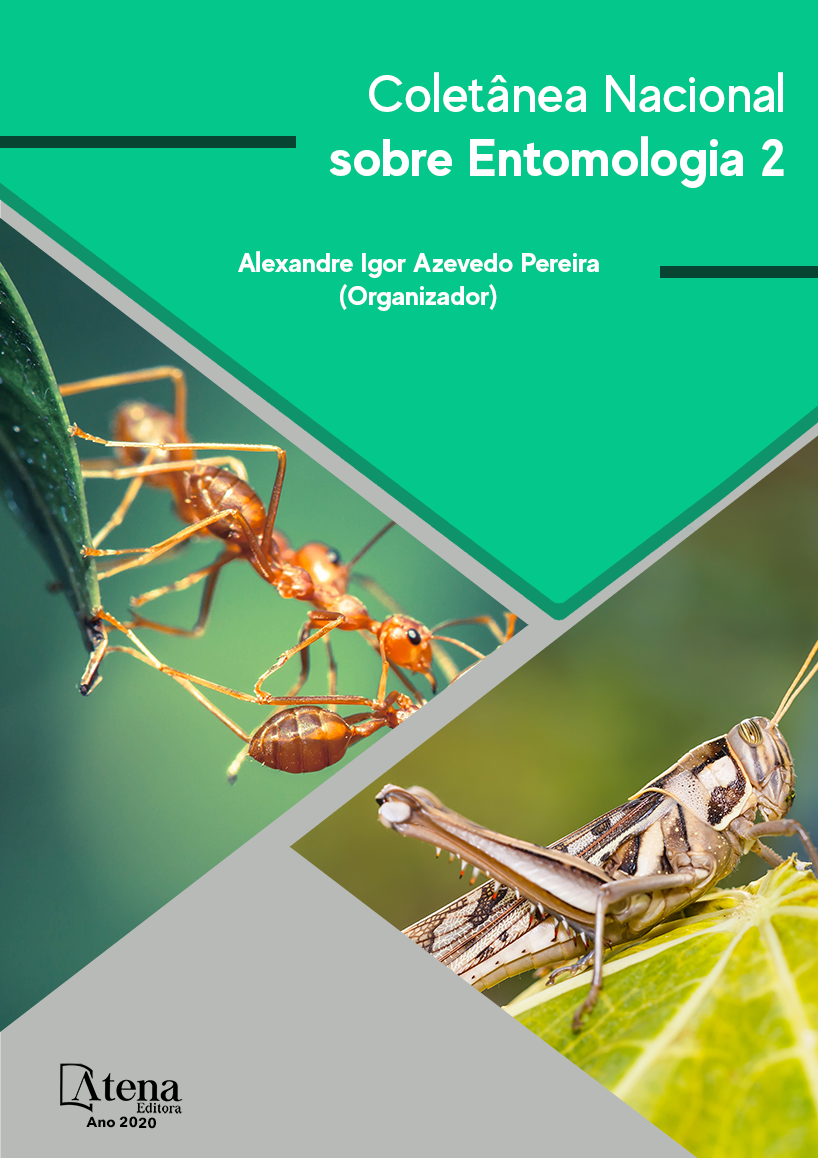
CRISOPÍDEOS (INSECTA, NEUROPTERA, CHRYSOPIDAE) DA ÁREA DE PROTEÇÃO AMBIENTAL (APA) MUNICIPAL TARTARUGAS, ANCHIETA, ESPÍRITO SANTO
Na região Neotropical, a fauna de
Chrysopidae ainda é pouco conhecida. Mesmo
assim, o número de espécies já registrado, em
torno de 300, indica que esta região é uma
das que apresentam maior diversidade, pois
existem somente cerca de 1.200 espécies em
todo o mundo. No Brasil, vem sendo ampliado
os registros deste táxon com os trabalhos
desenvolvidos na Mata Atlântica do Rio de
Janeiro e Espírito Santo, ante os levantamentos
existentes eram restritos principalmente à
Floresta Amazônica, agroecossistemas. Em
área de restinga não se tem registro desse grupo
taxonômico. Assim como forma de conhecer
a comunidade de Chrysopidae ao longo da
área de distribuição deste ecossistema, foram
utilizadas armadilhas, garrafas PET, contendo
solução de melado de cana-de-açúcar, pois os
insetos adultos são polinívoros e nectarívoros.
As armadilhas foram instaladas de fevereiro
de 2014 a fevereiro de 2015 na restinga APA
Municipal tartaruga em Anchieta, ES. Foram
coletados 99 indivíduos adultos, distribuídos
em duas tribos Leucochrysini e Chrysopini, 5
gêneros e 37 espécies. Destas, Leucochrysa
(Nodita) sp10 (n=21 indivíduos), Leucochrysa
(Nodita) cruentata (n=15) foram as mais
abundantes. Assim como nos registros em
ecossistema florestal, a restinga apresentou
maior representatividade da tribo Leucochrysini.
Estes dados caracterizam-na como área
importante para a manutenção da diversidade
deste grupo taxonômico. A ausência de
Leucochrysa (Leucochrysa) varia na área
representa que as condições de umidade são
muito variáveis, pois essa espécie é exigente em ambientes úmidos e mais escuros.
CRISOPÍDEOS (INSECTA, NEUROPTERA, CHRYSOPIDAE) DA ÁREA DE PROTEÇÃO AMBIENTAL (APA) MUNICIPAL TARTARUGAS, ANCHIETA, ESPÍRITO SANTO
-
Palavras-chave: Chrysopidae, Restinga, Predadores.
-
Keywords: Chrysopidae, Restinga, Predators.
-
Abstract:
In the Neotropics, the Chrysopidae fauna is still unknown. Even so, the
number of species already registered, around 300, indicating that this region is the one
that presents the greatest diversity since there are only about 1,200 species worldwide.
In Brazil, it has been expanded records of this taxon with the work developed in the
Atlantic Forest of Rio de Janeiro and Espirito Santo, compared to existing surveys
were restricted mainly to the Amazon forest, agro-ecosystems. In spits it has no record
of this taxonomic group. So in order to know the Chrysopidae community along the
distribution area of this ecosystem, traps were used PET bottles containing molasses
solution of sugarcane as the adult insects are pollinivores and nectarivores. The traps
were installed in February 2014 to February 2015 in the sandbank Municipal APA
turtle in Anchieta, ES. They collected 99 adults, distributed in two Leucochrysini and
Chrysopini tribes, 5 genera and 37 species. Of these, Leucochrysa (Nodite) SP10 (n =
21 individuals), Leucochrysa (Nodite) cruentata (n = 15) were the most abundant. As
well as the records in the forest ecosystem, the sandbank had a higher representation
of Leucochrysini tribe. These data characterize it as an important area for maintenance
of the diversity of this taxonomic group. The absence of Leucochrysa (Leucochrysa)
varies in the area is that moisture conditions are very variable, because this species is
demanding in damp and darker environments.
-
Número de páginas: 13
- Hussuali Zuchi Siqueira Souza
- Veluma de Andrade Guimarães
- Gilson Silva-Filho
- Cíntia Cristina Lima Teixeira
- Helimar Rabello
- Otoniel de Aquino Azevedo


